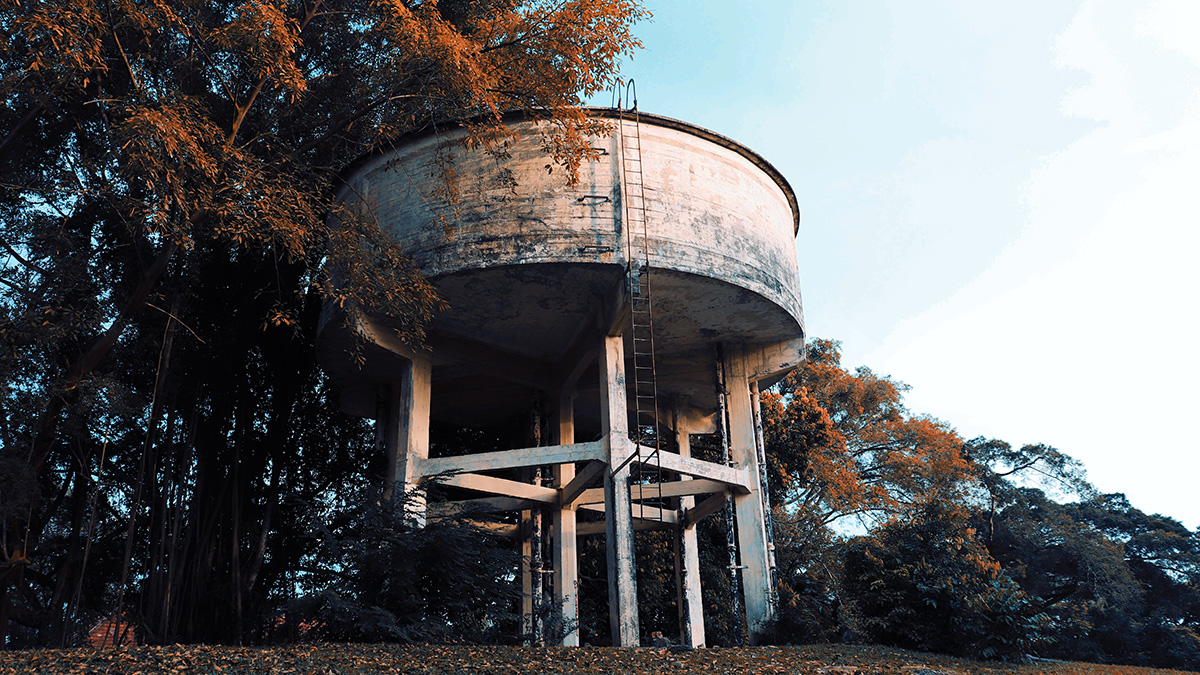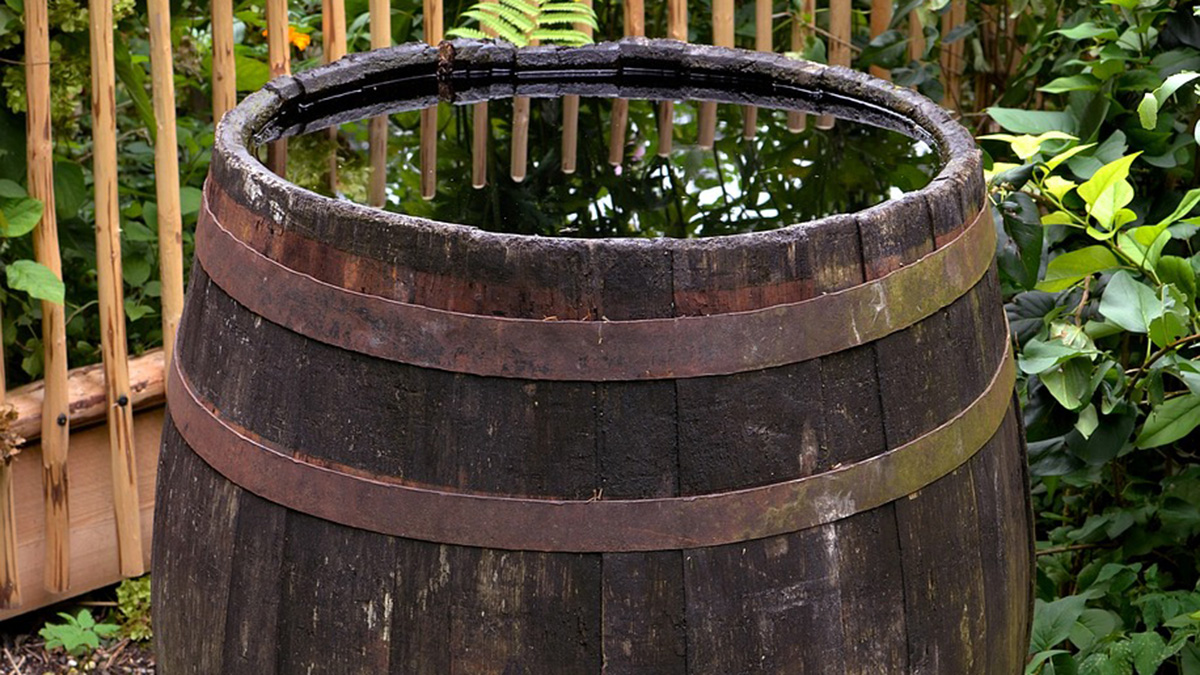Rainwater harvesting is a good practice of environmental sustainability, also to address climate change and increasingly frequent periods of drought. At a regulatory level, the management of rainwater is managed at a regional level. However, at a national level it is established that these waters can only be used for non-potable purposes, such as irrigation of vegetable gardens, agricultural fields and flower gardens.
Il rainwater recovery has been part of good practices for some years now environmental sustainability. With the grip of climate change, increasingly intense droughts and a possible reduction in available fresh water, it is more essential than ever to save and recover as much water as possible. But what are the normative in force for the recovery of rainwater and, above all, how they work collection plants?
Rainwater harvesting is a practice that can be developed on multiple levels, from simple household devices for watering the garden to real industrial-type systems. Below is some useful information.
What is meant by rainwater harvesting?
Rainwater recovery refers to the set of practices and technologies aimed at reusing the so-called rainwateror those that fall or gush to the ground following atmospheric phenomena. In simpler words, rain is collected through special tanks, and the recovered water is then used to irrigate fields, clean surfaces, manage sanitary waste and other needs.
The trend towards rainwater recovery has gained ground especially in recent years, as a sustainable response to both climate change that as a good practice for saving water. In particular, with increasingly intense periods of drought, the use of rainwater for irrigation and other non-hygienic or food purposes allows for saving large quantities of drinking water.
As already mentioned, recovering rainwater is possible on several levels, both domestic and industrial, depending on the regulations in force.
The benefits of rainwater harvesting
Before going into the regulatory and practical details of rainwater recovery, it is useful to talk about the advantages of this sustainable practice. The benefits of increasingly widespread rainwater harvesting technologies, in fact, do not only include water savings:
- Reduction in drinking water consumption: as previously explained, the use of rainwater for non-potable purposes limits the waste of drinking water;
- Savings on your bill: of course, especially at a domestic level, reusing rainwater helps to keep water bills down;
- Improvement of the hydrogeological profile: rainwater harvesting can also be a useful means of preventing floods and inundations, as it involves the restoration and adaptation of drainage systems that would otherwise not be maintained.
The regulation on the reuse of rainwater
At the Italian level, the management of rainwater recovery is mostly managed at the regional level, as established by the “Framework law for the reorganization of the regime of use of public waters” of 1991, which gives the Regions the power to regulate the reuse of rainwater. This law is followed by other regulatory interventions, such as the Legislative Decree 152 of 1999 and the Legislative Decree 152 of 2006where it is specified that the Regions, in order to prevent hydraulic and environmental risks, define:
- control of rainwater runoff discharges;
- the requirements and authorisations relating to the use of rainwater runoff.
Therefore, check the various provisions at regional level, for the construction of plants – both domestic and industrial – the reference is to the Consolidated Law for Construction. The latter was updated during 2023, as a result of the Drought Decreeto allow the installation of rainwater collection tanks of up to 50 cubic meters without the need to obtain specific permits.
General principles of the regulations

Precisely because the issue is mostly managed at a regional level, before proceeding with the recovery of rainwater it is necessary to be adequately informed, to verify the need to obtain specific authorizations. Generally speaking, there are some principles that are valid almost everywhere:
- the use of reclaimed water is usually permitted for non-potable purposes: watering of vegetable gardens and gardens, cleaning of external surfaces and so on. However, food or hygiene consumption is not permitted;
- some can be established maximum quantitative collection limitsalways at a regional level, to avoid excessive exploitation of water resources;
- collection systems must not conflict with current environmental regulations and, above all, must be designed so that they are reduced environmental impact.
Again, it is also useful to point out the UNI/TS 11445 normof 2012, which defines the technical standards for rainwater collection and use systems, in terms of design, installation and maintenance.
Types of collection systems
As you can easily imagine, rainwater collection and reuse can be done in many different ways and not all of them require specific regulatory intervention. This is, for example, the case of small DIY solutions to recover water for gardening, which usually do not require specific authorizations. Below are the most common types of systems.
Small DIY solutions

The most basic and fastest way to recover rainwater at home is, as you can easily imagine, to rely on small do-it-yourself solutions. For example, many people place wooden or plastic barrels in their gardens to collect rainwater for watering their vegetable garden or garden plants.
These solutions do not require specific authorizationsgiven their small size and the absence of elaborate structures or tanks, and are very easy to make. Just get a bin or a barrel, provide a tight mesh cover over the opening to prevent the accumulation of leaves or other debris and wait for nature to do the rest.
Domestic collection systems
At a higher level there are the domestic collection systemsor more elaborate solutions that, depending on the region, may require specific authorizations. In practice, this involves installing special collection tanks and a small distribution system, always for the non-potable use of these waters.
The most common types of systems are divided into:
- systems with tank or external tank;
- systems with tank or underground cistern.
The capacities, depending on the solutions available on the market, can reach up to 5,000 total liters of collected water. As previously specified, due to the Drought Decree, collection tanks smaller than 50 cubic meters and intended for agricultural use do not require special authorizations.
Industrial or public rainwater systems
Finally, at an industrial or public level, it is possible to foresee large-scale plantsfor the collection of both rainwater and runoff water. These, obviously subject to authorization given the size and possible environmental impact, may include:
- large tanks or collection basins;
- filtering and, if necessary, purification systems;
- channels and distribution networks.
Even in this case, the use remains strictly intended for non-potable consumption, such as irrigation, street cleaning or various industrial needs.
Source: www.greenstyle.it


